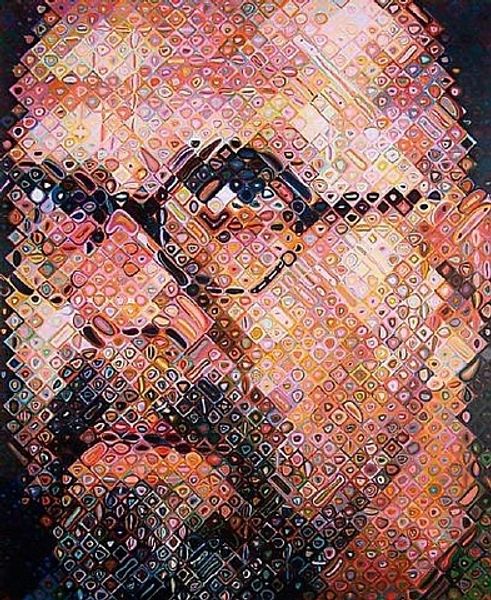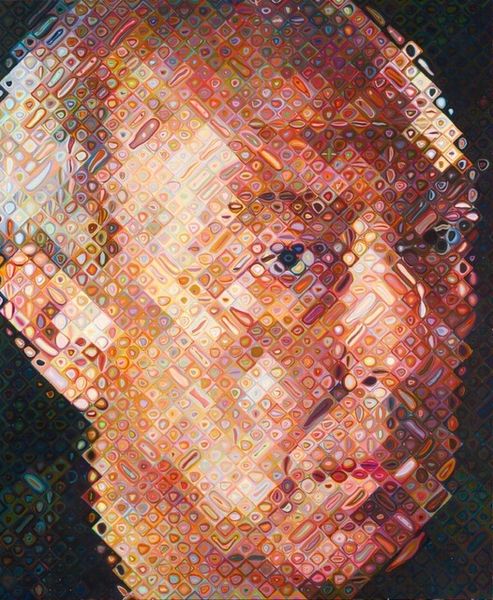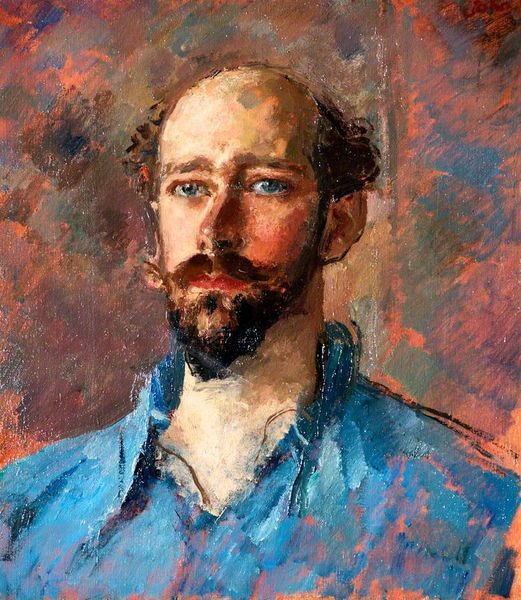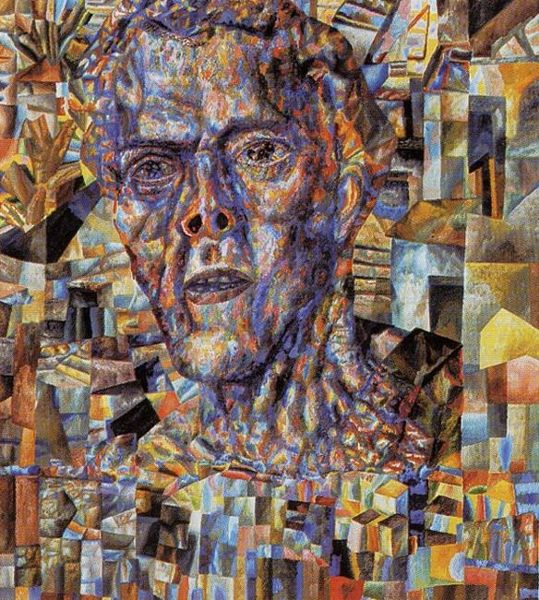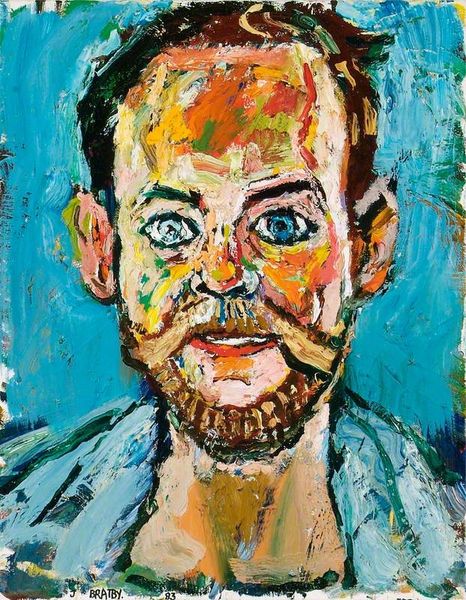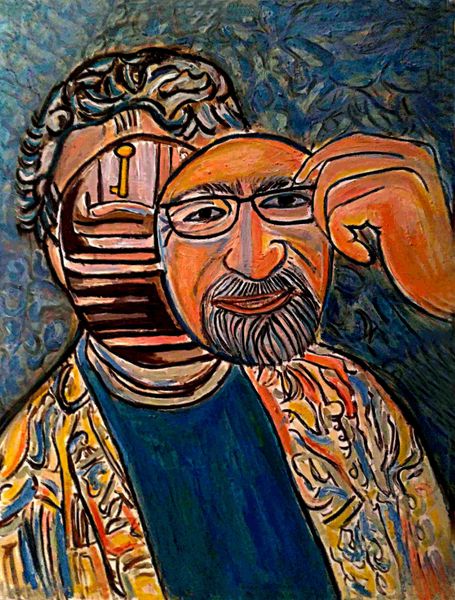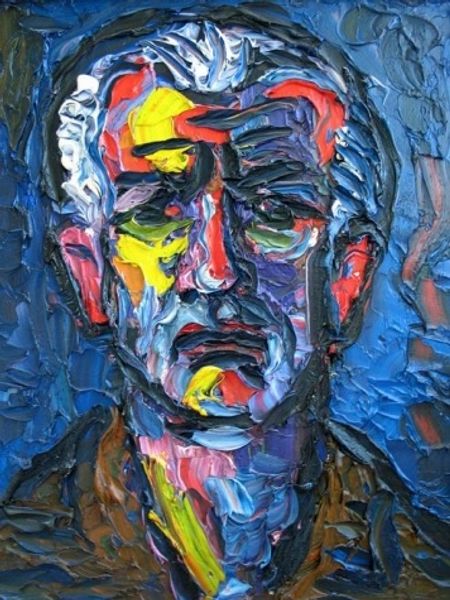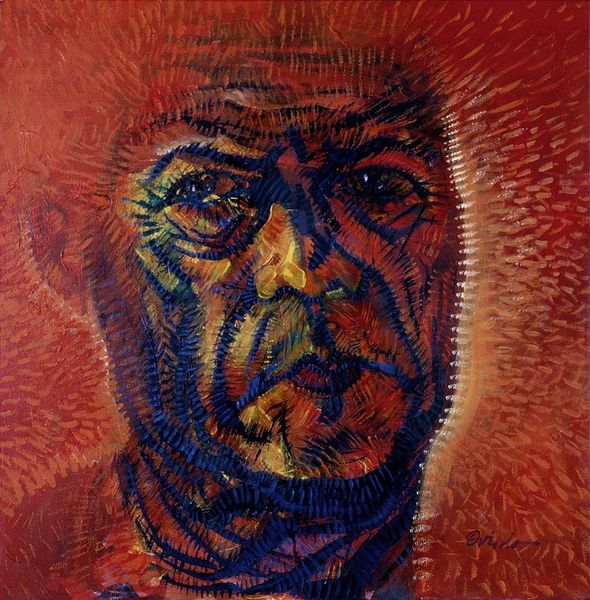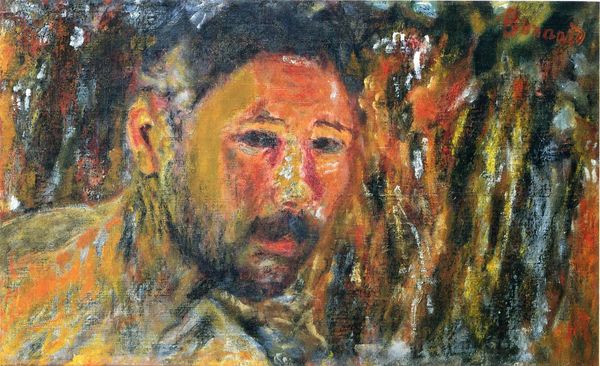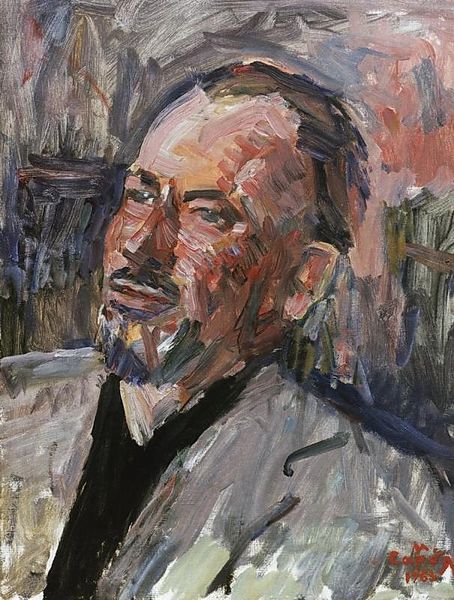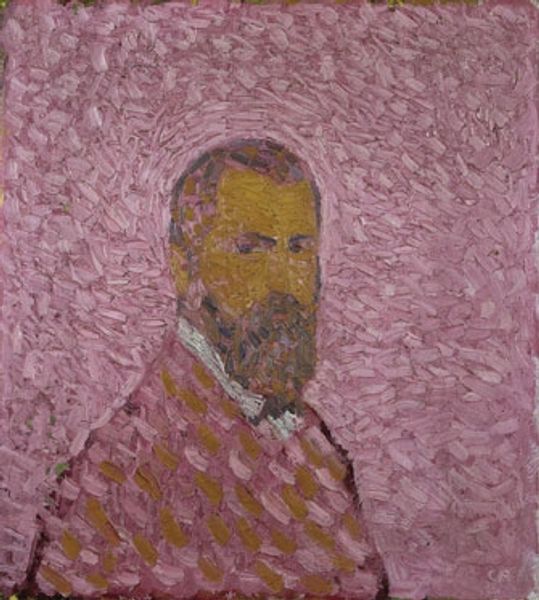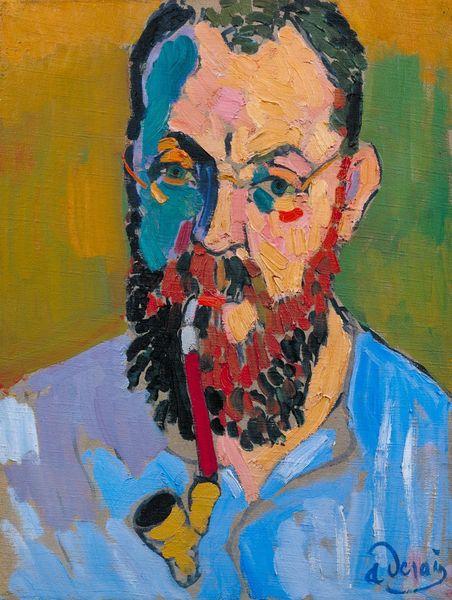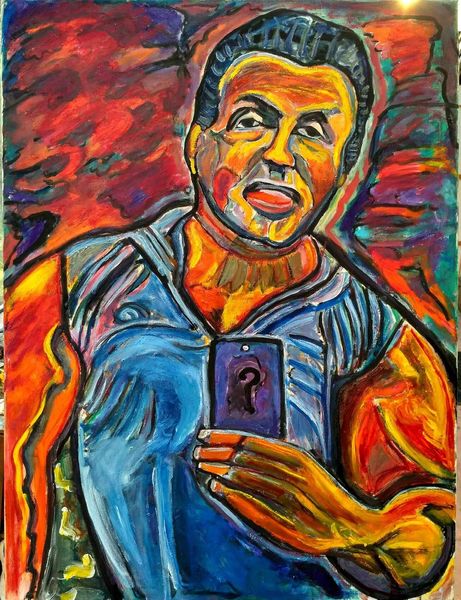
Copyright: Chuck Close,Fair Use
Curator: Let's take a look at Chuck Close's "Self-Portrait" from 2007, crafted with acrylic paint. It's a monumental piece, showcasing the artist in his signature grid-based style. What are your first impressions? Editor: My first thought is that it’s mesmerizing, almost hallucinatory. The fragmentation into these jewel-like squares initially obscures the subject, but then slowly, a face emerges. It’s like perception itself is being deconstructed. Curator: Exactly. Close's photorealist technique, evolving into this grid format after a spinal artery collapse, allowed him to continue creating. Consider the institutional context. His art challenges traditional notions of portraiture and authorship in art. How can an artwork both depict reality and abstract it? Editor: Absolutely. And I find it fascinating how disability informs this process. It transforms his practice into a powerful statement on ability and representation. We often expect flawless images of artists; Close subverts that expectation. He shows us a version of himself rebuilt, fractured, and still undeniably present. This isn’t just *a* self-portrait; it's a statement about identity after trauma. Curator: Right, it prompts us to reconsider art's role beyond mere representation. What do you think the impact on viewers is, knowing the circumstances of its creation? Does it influence how we perceive this particular artwork versus any other image that embraces similar geometric fragmentation? Editor: It infuses it with profound vulnerability. These fractured grids feel like fragments of memory, or pieces of a body put back together in a new formation. Moreover, he had such an awareness of portraiture and its place in art history, a lot of portraits traditionally functioned as a celebration of success, authority, even domination. Here, the process highlights human resilience. It really complicates conventional art hierarchies. Curator: I concur; thinking about it within art history circles, this piece caused much discussion, especially how portraiture shifted in the late 20th century. Editor: Agreed. Well, that gives me plenty to consider, even after looking at it for quite some time! Curator: Me too. This conversation has deepened my understanding of Close’s self-representation, particularly as a negotiation between artistic intention and societal perception of artists and what artwork can mean in the grander sense of things.
Comments
No comments
Be the first to comment and join the conversation on the ultimate creative platform.
